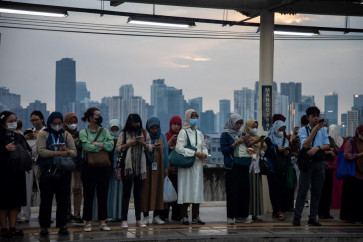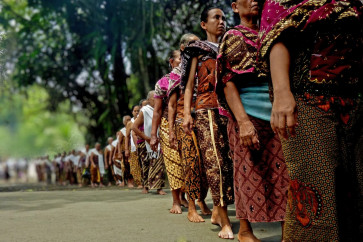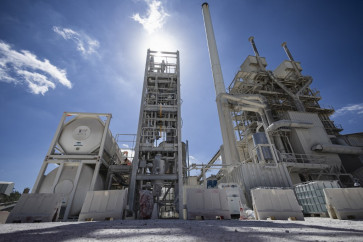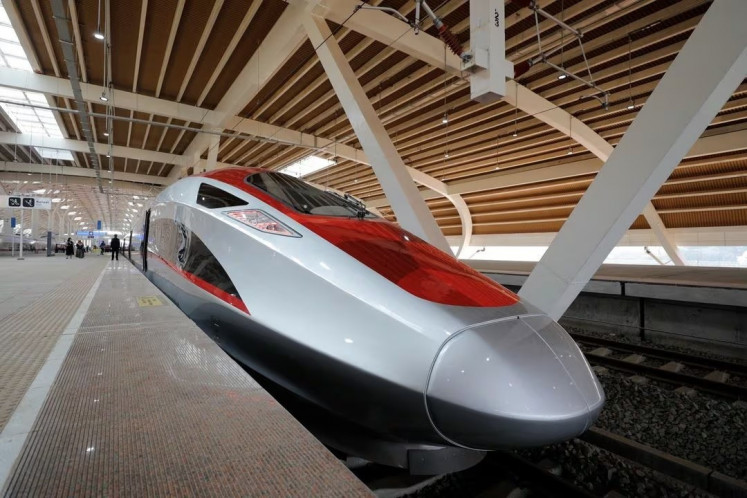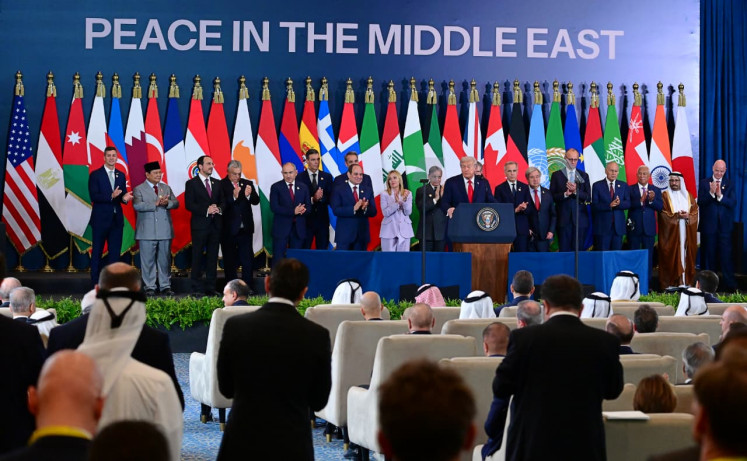Popular Reads
Top Results
Can't find what you're looking for?
View all search resultsPopular Reads
Top Results
Can't find what you're looking for?
View all search results'Indonesia makes good progress in green building'
Green development in Indonesia presently covers 25 million square meters, or about 5
Change text size
Gift Premium Articles
to Anyone
G
reen development in Indonesia presently covers 25 million square meters, or about 5.7 times the area of Vatican City, thanks to significant progress made by Jakarta and Bandung in pioneering green building codes, says a recently released report, but challenges await further progress.
Published early this month, the report from the International Finance Corporation (IFC), the World Bank Group's financing arm, shows that Indonesia has made significant advancements in green development through various governmental efforts.
The report cites figures from the IFC's June 2018 survey, which found 339 buildings covering 21 million sq m in Jakarta that complied with the green building code, and more than 3,000 buildings covering 880,000 sq m in Bandung that complied with the code.
“There is a strong business case for the private sector, financiers and governments to invest in green buildings [...] which will play a significant role in helping the country meet its climate targets,” Azam Khan, the IFC country manager for Indonesia, Malaysia and Timor Leste, stated in a press release.
With total coverage of 25 million sq m, green development in Indonesia potentially reduced CO2 emissions by more than 1 million metric tons, equivalent to not driving 216,000 passenger cars for one year.
At the same time, green buildings have saved up to 1.5 million megawatt hours in energy use, which has helped residents and businesses save over US$120 million (Rp 1.68 trillion) in energy bills.
Banking on the potential benefits from the sector, Bank Indonesia recently announced a 5 percent increase in the maximum loan-to-value ratio for green development to 90 percent, thereby lowering the down payment that have to be paid by borrowers.
The Financial Services Authority (OJK) also issued a national regulation that requires banks to report annually on their green financing products and services, growth in green financing portfolios and changes in organizational structure, governance and risk management. The regulation is intended to ensure banks' compliance with environmental, social and governance norms while building internal capacity for sustainable finance.
“There are regulations that make green buildings mandatory. But
if there’s no demand from the market [green development] will go
nowhere.”
The Public Works and Housing Ministry has been working with the IFC since 2015 to devise green building codes for Jakarta and Bandung, as well as the national green building code.
Drawing upon the IFC’s Excellence in Design for Greater Efficiencies certification standard, the ministry issued Ministerial Regulation No. 2/2015 to reduce environmental impacts from the construction industry.
Jakarta preceded the government by issuing gubernatorial regulations and related requirements in 2013, while cities in West Java, South Sumatra and Bali followed suit after the ministerial regulation was issued.
Panasonic reported in 2016 that although Indonesia's progress in recent years had been impressive and its future looked promising, it still lagged behind other Asian countries.
For example, it said, Singapore issued green building certificates to 2,100 buildings in 2005 — 25 percent of the city's developed area. Meanwhile, a leading property website in Bangladesh saw 420 percent growth in its listed eco-homes, and 17 percent of the 100,000 homes listed on Pakistan's property portal, Lamudi, were eco-friendly to some degree.
Earlier this year, Iwan Prijanto, the chairman of the Green Building Council Indonesia, said that while there was growing awareness about protecting the environment, not much had been done to educate the public about energy-saving buildings.
“There are regulations that make green buildings mandatory. But if there’s no demand from the market, [green development] will go nowhere,” Iwan told The Jakarta Post in March.
The next major challenge involves existing buildings that do not comply with green regulations. For example, more than 90 percent of all buildings in Jakarta was built before the green regulations were issued.
The health care and real estate segment manager at Schneider Electric Indonesia, Ferry Kurniawan, said that the least the building owners could do was to revamp parts of the building to meet some green requirements.
“It might not be done all at once. They [building owners] could first, for example, change their light bulbs or replace their air-conditioning system with an eco-friendlier one,” he said recently.
Schneider Electric said that from construction to operation, buildings across the globe consumed 40 percent of the energy and 12 percent of clean water that countries produced. In addition, buildings contributed 25 percent of global waste and 35 percent of greenhouse gas emissions.


